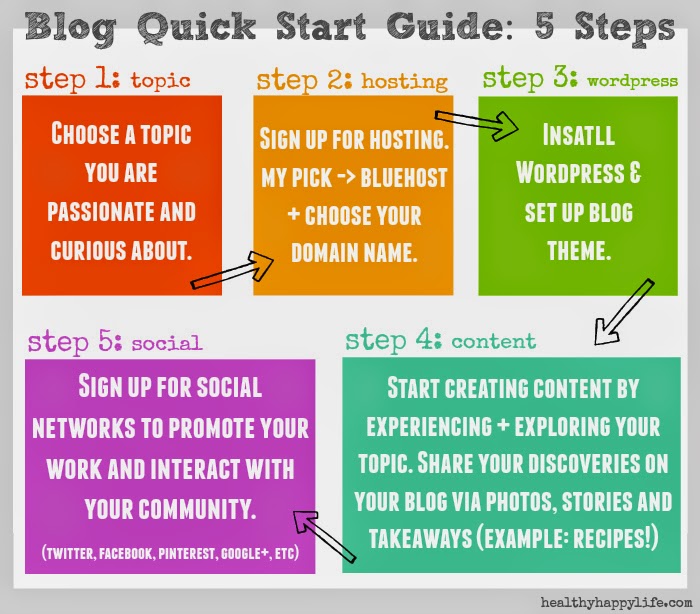How to Start a Blog: Looking to make your mark in the blogosphere? Get ready to dive into the world of blogging with our comprehensive guide that covers everything you need to know to kickstart your blogging journey.
From researching your niche to designing a killer layout and promoting your content, we’ve got you covered every step of the way. So grab your laptop and let’s get started on your path to blogging success!
Research and Planning

Researching and planning are crucial steps in starting a successful blog. By understanding your niche, target audience, and content strategy, you set yourself up for long-term success.
Importance of researching your blog niche
Researching your blog niche allows you to understand the market, competition, and trends within your chosen topic. It helps you identify what sets your blog apart and how you can provide unique value to your audience.
- Explore popular blogs in your niche to see what topics perform well.
- Use research tools to identify relevant s and topics.
- Engage with online communities and forums to understand the needs and interests of your target audience.
Steps to identify your target audience
Identifying your target audience is essential for creating content that resonates with your readers and drives engagement. Understanding who your audience is will help you tailor your content to meet their specific needs and interests.
- Develop buyer personas to represent your ideal audience members.
- Conduct surveys or polls to gather feedback and insights from your audience.
- Analyze your website analytics to understand the demographics and behavior of your current audience.
Significance of creating a content strategy
A well-defined content strategy helps you stay organized, consistent, and focused on your blog goals. It ensures that you are producing high-quality content that aligns with your audience’s interests and needs.
- Set clear objectives and goals for your blog content.
- Plan your content calendar to maintain a regular posting schedule.
- Establish guidelines for content creation, including tone, style, and formatting.
Setting Up Your Blog
Starting a blog is an exciting journey that begins with setting up your platform, domain name, and web hosting service. Here’s a guide to help you get started:
Best Platforms for Starting a Blog
When it comes to choosing the best platform for your blog, consider popular options like WordPress, Blogger, and Wix. These platforms offer user-friendly interfaces, customizable templates, and various plugins to enhance your blog.
Selecting a Domain Name
Your domain name is essentially your blog’s address on the internet, so it’s important to choose a name that is memorable, relevant to your content, and easy to spell. Here are some tips for selecting a domain name:
- Keep it short and simple
- Avoid using numbers or hyphens
- Consider including s related to your niche
- Check for domain availability and ensure it’s unique
Choosing a Reliable Web Hosting Service
A reliable web hosting service is crucial for the performance and security of your blog. Consider factors such as uptime reliability, customer support, pricing, and scalability when choosing a web hosting provider. Look for hosting services that offer:
- 24/7 customer support
- Fast loading speeds
- Regular backups and security measures
- Scalability for future growth
Design and Customization
When it comes to starting a blog, the design and customization play a crucial role in attracting and retaining readers. A well-designed blog not only looks visually appealing but also enhances the overall user experience.
Choosing a Responsive Blog Design
A responsive blog design is essential in today’s digital age where users access content on various devices, such as smartphones, tablets, and desktops. By choosing a responsive design, you ensure that your blog adapts to different screen sizes and resolutions, providing a seamless and consistent experience for all users.
- Make sure to test your blog on different devices to ensure it displays correctly and is easy to navigate.
- Opt for a clean and simple layout that focuses on readability and user interaction.
- Consider the loading speed of your blog, as a responsive design can also impact the performance of your site.
Customizing Your Blog’s Layout and Theme
Customizing your blog allows you to create a unique brand identity and stand out from the competition. Here are some tips for customizing your blog’s layout and theme:
- Choose a color scheme that reflects your brand and resonates with your target audience.
- Personalize your blog by adding custom logos, graphics, and fonts that align with your brand image.
- Experiment with different layouts and widgets to optimize the user experience and highlight important content.
Creating a Visually Appealing and User-Friendly Interface, How to Start a Blog
The interface of your blog is the first thing that users notice, so it’s crucial to create a visually appealing and user-friendly design. Here are some key points to consider:
- Use high-quality images and multimedia content to enhance the visual appeal of your blog.
- Organize your content in a clear and structured manner to make it easy for users to navigate and find information.
- Include intuitive navigation menus and search functionality to help users explore your blog effortlessly.
Creating Quality Content: How To Start A Blog
Creating quality content is essential for the success of your blog. Engaging your audience with interesting and valuable content will keep them coming back for more. Here are some strategies to help you generate engaging content ideas and maintain a consistent schedule.
Generating Engaging Content Ideas
Coming up with fresh and engaging content ideas can be challenging, but it’s crucial for keeping your audience interested. Here are some tips to help you brainstorm new ideas:
- Stay up to date with industry trends and news to find relevant topics to write about.
- Ask your audience for feedback and suggestions on what they would like to read.
- Look at what your competitors are doing and find ways to put your unique spin on popular topics.
- Use tools like Google Trends, BuzzSumo, and SEMrush to discover popular topics and s.
- Consider creating different types of content such as how-to guides, listicles, case studies, or interviews to keep things interesting.
Writing -Friendly Content
Writing -friendly content is important for improving your blog’s visibility on search engines. Here are some tips to help you optimize your content for search engines:
- Research relevant s and include them naturally in your content to improve your chances of ranking higher on search engine results pages.
- Write clear and concise meta descriptions that accurately describe your content to entice users to click on your blog post.
- Use headings, subheadings, and bullet points to make your content more readable and scannable for both readers and search engines.
- Optimize your images by using descriptive alt text and file names to help search engines understand the content of your images.
- Regularly update your content to keep it fresh and relevant, which can improve your search engine rankings over time.
Creating a Content Calendar
Maintaining a content calendar can help you stay organized and consistent with your blogging schedule. Here are some tips for creating a content calendar:
- Start by outlining your content goals and objectives to guide your content creation process.
- Use a spreadsheet or online tools like Trello or CoSchedule to plan out your content schedule and deadlines.
- Include important dates, holidays, and events that are relevant to your niche to help you brainstorm timely content ideas.
- Map out your content topics, s, and publishing dates to ensure a consistent posting schedule.
- Review and adjust your content calendar regularly to accommodate any changes or new ideas that may arise.
Promoting Your Blog

Promoting your blog is crucial to increasing visibility and attracting more readers. Utilizing social media, building an email list, and collaborating with other bloggers are effective strategies to boost your blog’s reach.
Utilizing Social Media
- Choose the right platforms: Identify which social media platforms your target audience uses the most and focus your efforts on those.
- Create engaging content: Share blog posts, images, videos, and updates that resonate with your audience to encourage likes, shares, and comments.
- Interact with your followers: Respond to comments, messages, and engage with your audience to build a loyal community around your blog.
- Utilize hashtags: Use relevant hashtags to increase the visibility of your posts and attract new followers interested in your niche.
Building an Email List
- Offer incentives: Provide exclusive content, freebies, or discounts in exchange for email subscriptions to entice readers to sign up.
- Create captivating opt-in forms: Design visually appealing and user-friendly opt-in forms on your blog to make it easy for visitors to subscribe.
- Schedule regular newsletters: Keep your subscribers engaged by sending regular updates, blog highlights, and exclusive content via email.
- Segment your list: Divide your email list based on interests or demographics to send targeted content and increase engagement.
Collaborating with Other Bloggers
- Reach out to bloggers in your niche: Connect with other bloggers through email or social media to propose collaboration opportunities such as guest posting or joint projects.
- Host a blogging event: Organize a virtual event like a webinar, podcast, or social media takeover with other bloggers to cross-promote each other’s content.
- Participate in blogger networks: Join blogging communities or networks where you can meet and collaborate with like-minded bloggers to expand your audience reach.
- Share each other’s content: Promote other bloggers’ posts on your social media channels and ask them to do the same for your blog to increase visibility.
Monetization Strategies
Now that your blog is up and running, it’s time to explore different ways to monetize your content and turn your passion into profit. Here are some strategies to consider:
Affiliate Marketing
Affiliate marketing involves promoting products or services and earning a commission for every sale made through your unique affiliate link. It’s important to choose products that align with your blog’s niche and audience to maximize earning potential.
Sponsored Posts
Sponsored posts are another way to monetize your blog by partnering with brands or companies to create content that promotes their products or services. Make sure to disclose sponsored content to maintain transparency with your audience.
Ads
Displaying ads on your blog can generate revenue through pay-per-click or pay-per-impression models. Consider using ad networks like Google AdSense or Mediavine to manage and optimize ad placements for maximum earnings.
Diversifying Income Streams
It’s important to diversify your income streams to reduce reliance on a single source of revenue. By incorporating a mix of affiliate marketing, sponsored posts, and ads, you can create a more stable and sustainable income for your blog.
Tracking and Analyzing Performance
Tracking and analyzing your blog’s performance is crucial to optimizing your monetization strategies. Use tools like Google Analytics to monitor traffic, engagement, and conversion rates to identify areas for improvement and growth.